Out of the four choices given to me for my 3D blender animation, the factory/machine option seemed more interesting. It provided the most creative freedom for my work.
When deciding upon what to make, I pursued the feeling of discomfort, which could be easily related to industrial themes. My decision making was influenced by a series of sketches I previously created in my spare time. I then created a mood board of some of my inspirations.
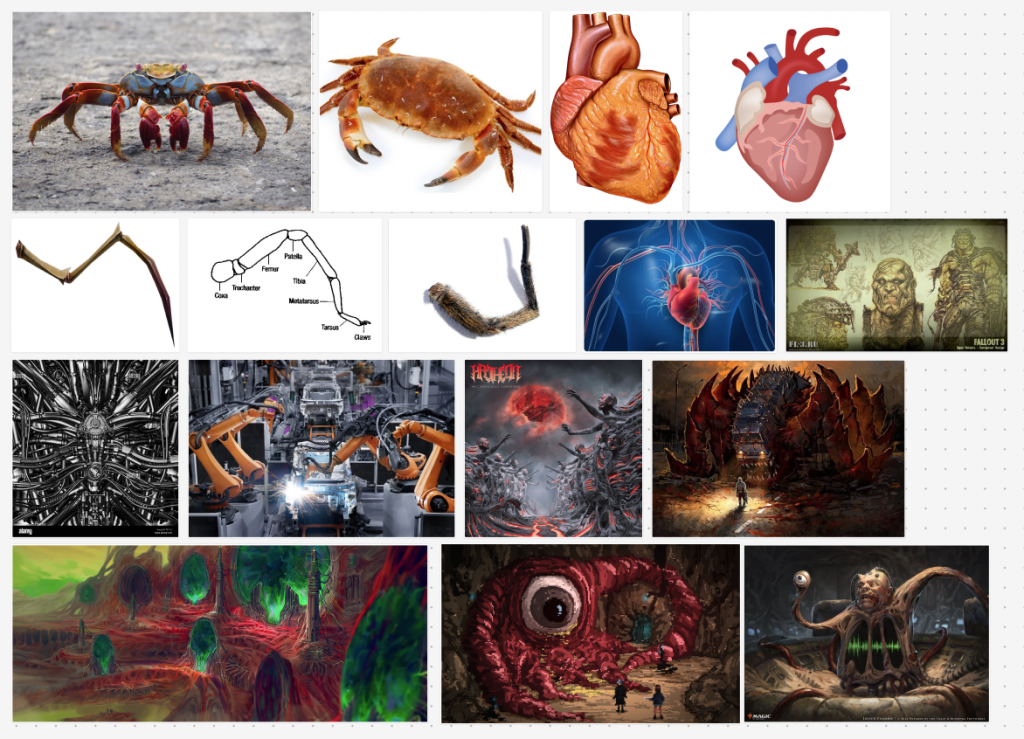
After creating the mood board, it became obvious which elements would benefit from being combined and where these should be placed. The first creation was made exactly as it had be envisioned. With 3D, comes a simplification of the original sketch, but making the concept sketch as detailed as possible would enable better understanding of the ideas being portrayed.
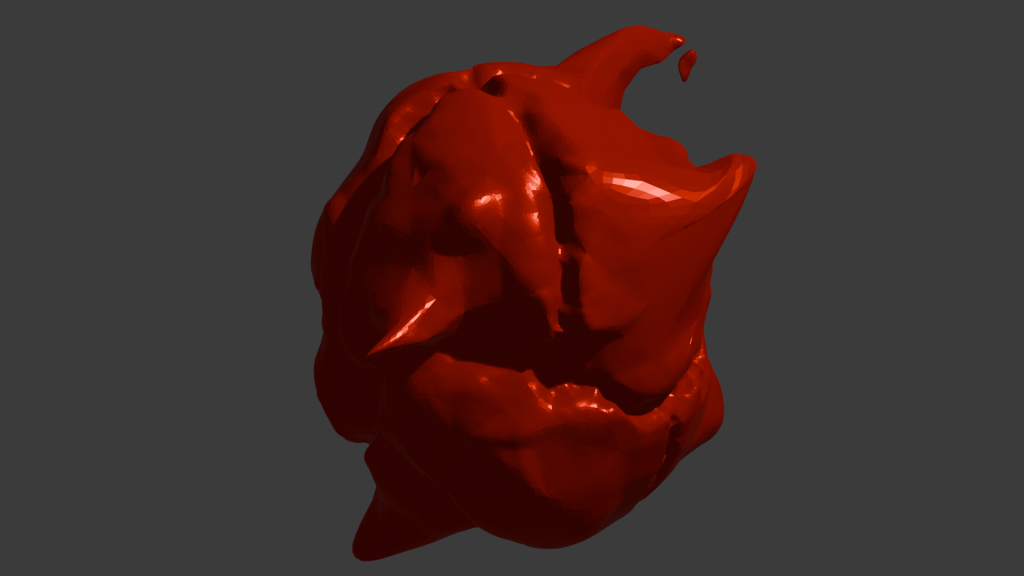
Blender enabled me to develop a prototype of the original concept. This could outline the challenges to come in the future.
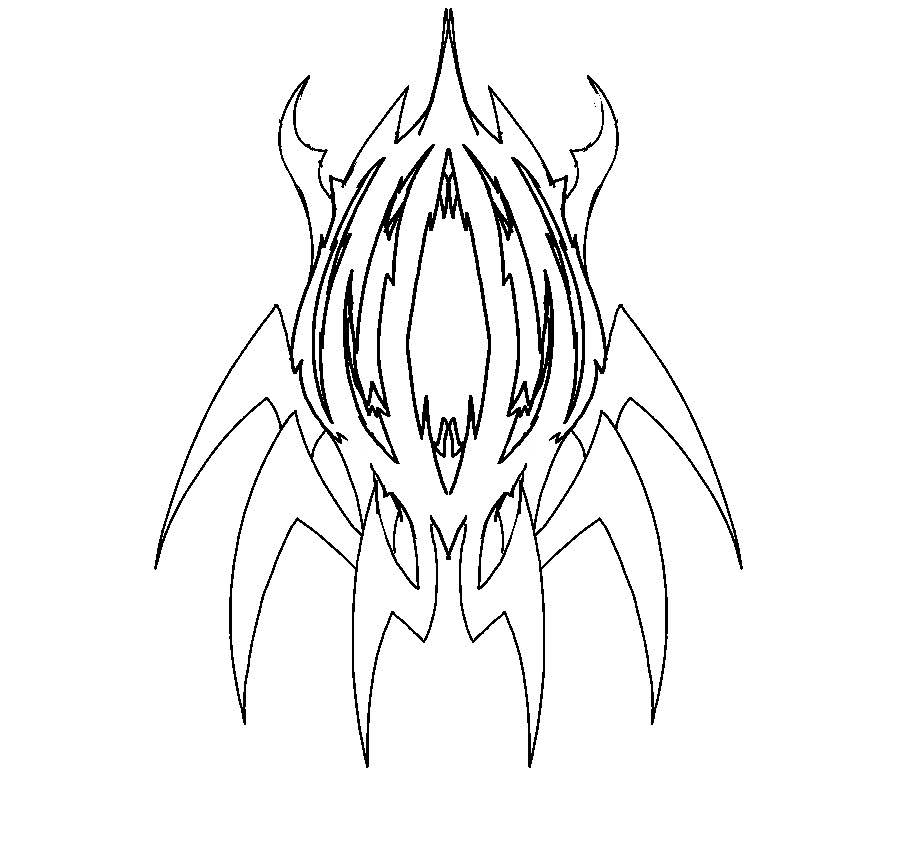
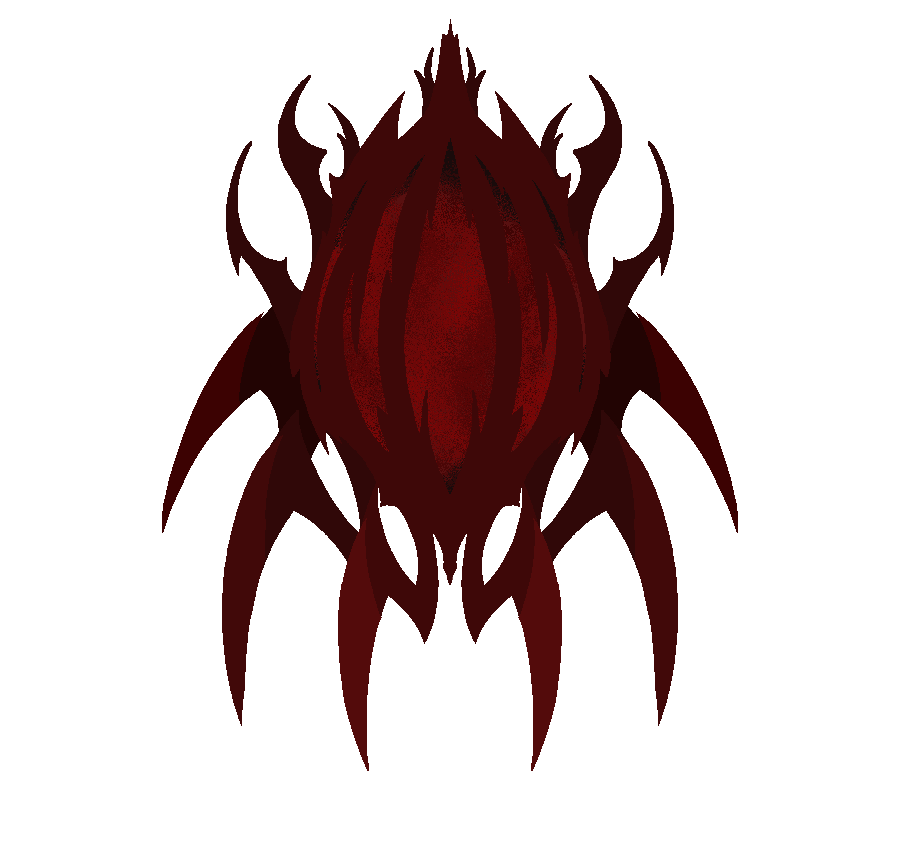
After creating the concept sketch, the next task was to transition it to 3D. Having previously experimented with a 3D model, there was some understanding of the process. Nevertheless, the concept sketch would still provide challenges in the process of adding a 3D aspect.
However, in retrospect, and after discussions with other students, I decided upon a different idea. This subsequent idea used recognisable industrial imagery, such as pistons and gears in motion, and incorporated a supervisor in the form of an eye, observing all proceedings. This represented the corporate supervision that is evident in most workplaces. In addition to this, the camera would first rest on a Ruby, before panning backwards to reveal another image; a pupil belonging to an eye. With this idea, I’m emphasising the mechanical qualities of corporate management.
With this new idea, I went to make some new mood boards, as this would help show my influences on what would be made.
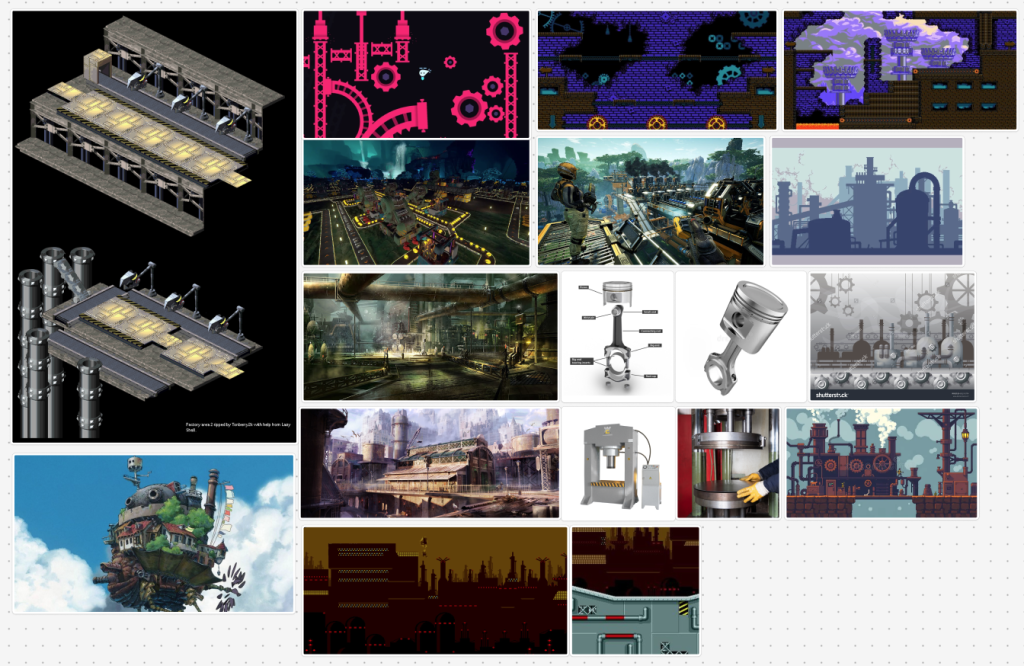
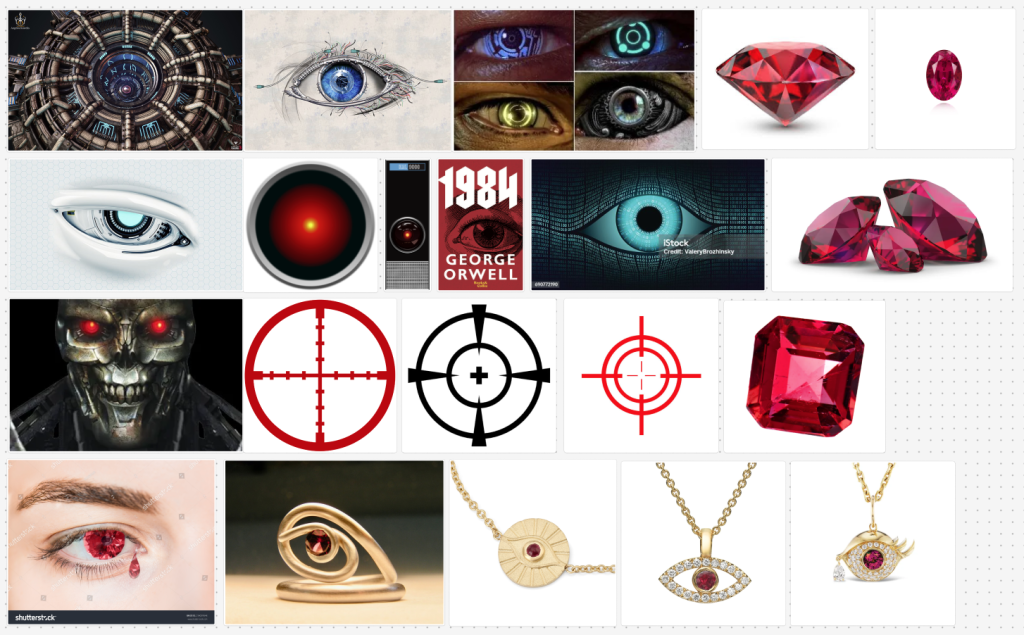
The factory mood board has a combination of generic factory areas from media, as they may influence the styling. Along with this, I also decided to include some more personal influences from games and movies I had watched as I think of them when imagining an industrial setting.
The eyeball mood board compiles a mixture of themes. Firstly, the eyeballs are a combination of technology and the eye itself. Once they were included, I believed it necessary to include the media products that have influenced the creations the most. One, in particular, was 1984 and it’s many adaptations across media. The last few additions are crosshairs and rubies, to showcase what the metamorphosis/transition’s main themes would be.
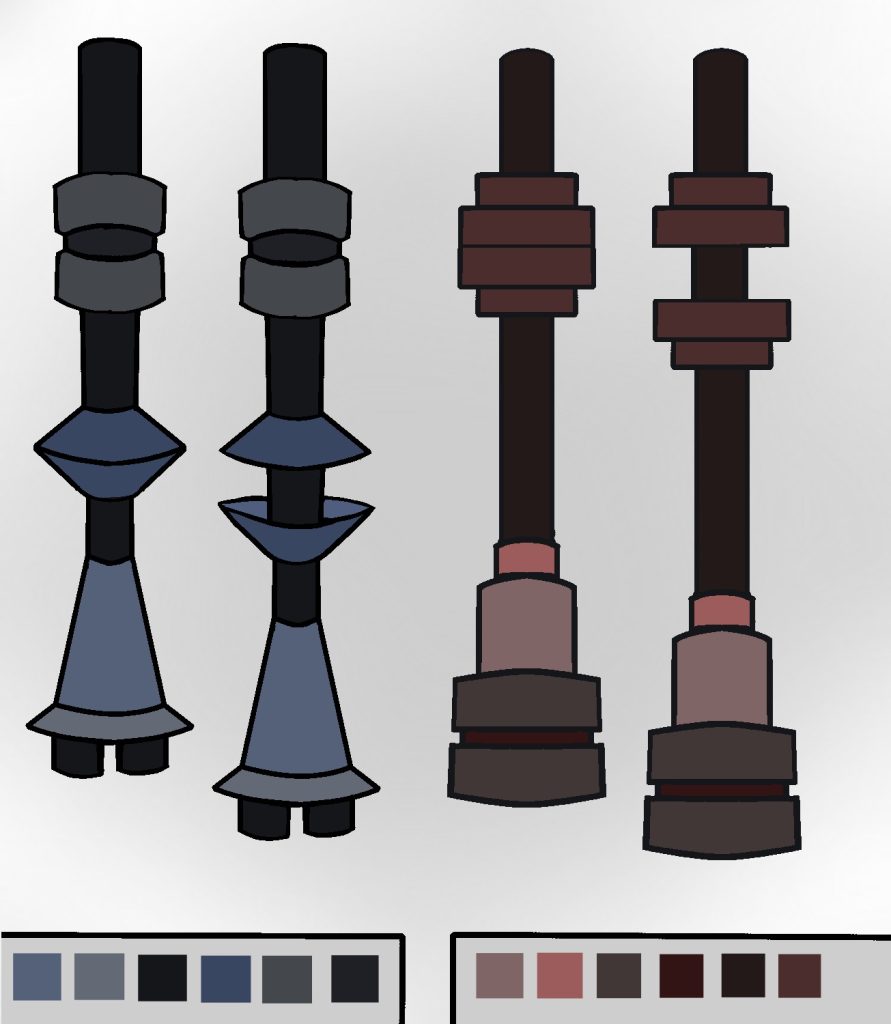
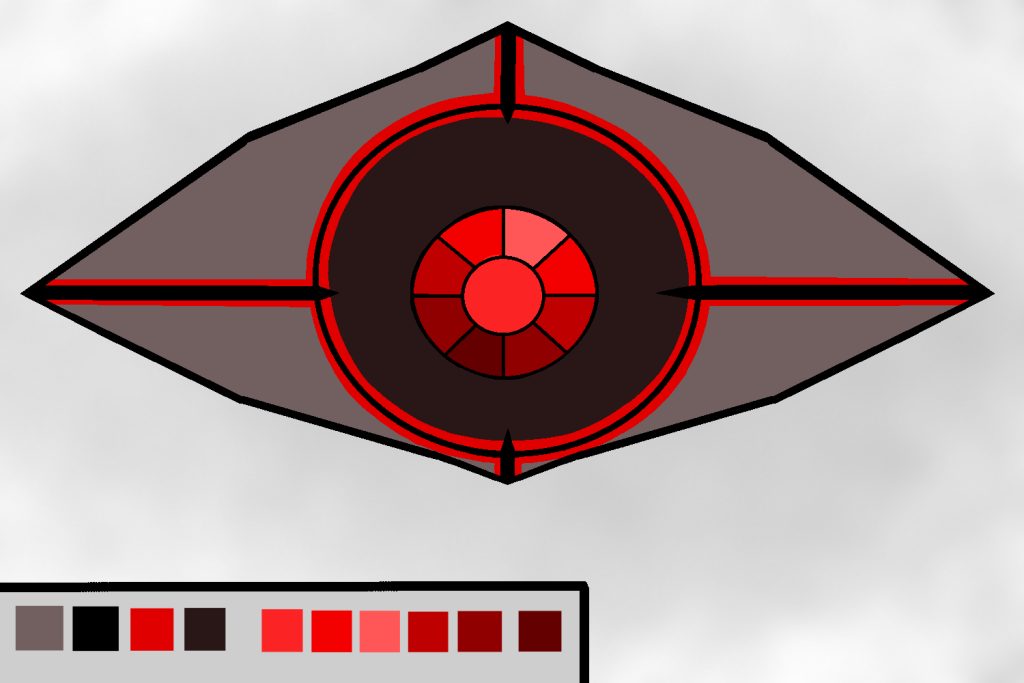
After putting the mood boards together, the sketching process began. The colours were made dull as to represent how industrial areas and machinery are devoid of aesthetics and are there to serve nothing more than their purpose. What vibrant colour is left, is in the main centrepiece, being the ruby of the eye. This serves to tell us that only the rich and powerful have access to the appreciation of beauty. Everything else is functional. The pistons used two primary colours, red and blue, that are opposites. Whilst the blue stands for cold efficiency, red suggests emotion and passion, two very human qualities.
References
Orwell, G. (1949). 1984. United Kingdom: Secker & Warburg. p.328.
(1984). [Film]. Southwest London: Virgin Films.
Orwell, G, White J.. (2024). George Orwell’s 1984 Audiobook. [Audible]. Audiblr Original. Available at: https://www.audible.co.uk/pd/George-Orwells-1984-Audiobook/B0CRS2YMLQ [Accessed 6 March 2025].